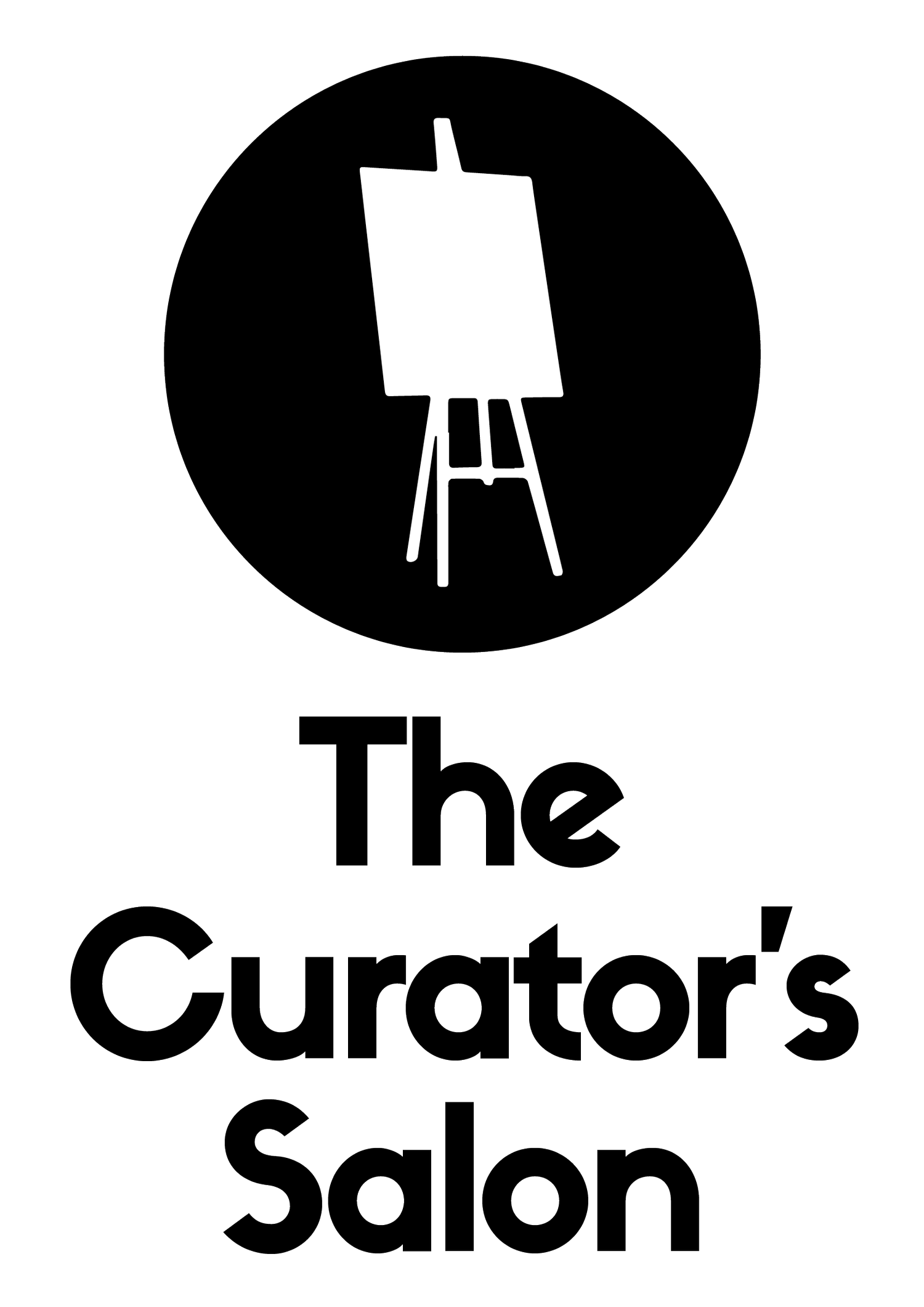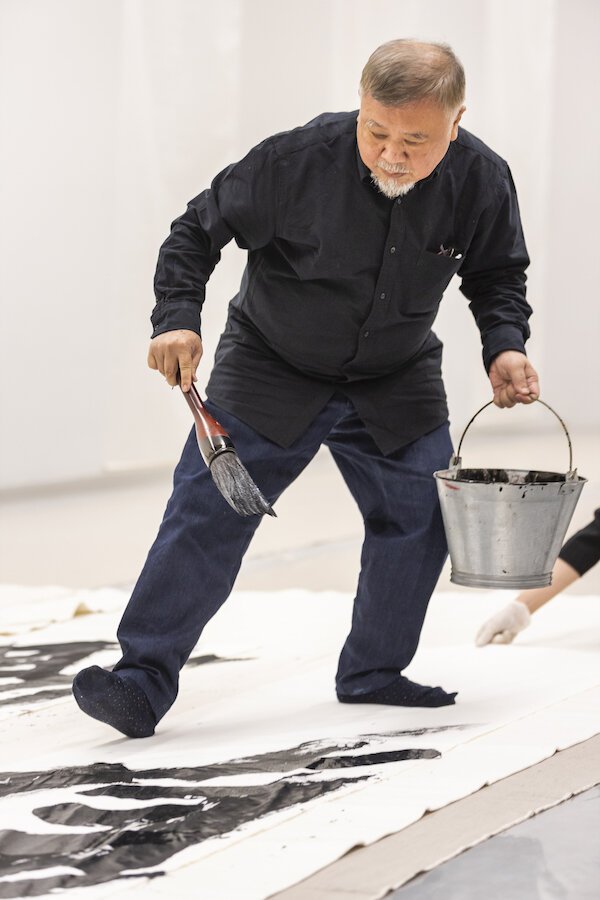Interview with Yahon Chang
I caught up with Yahon Chang to talk about his work and becoming an artist. He has painted every day for 30 years and came to it after an illness. He talks about art as healing for him and the spirituality in his work, as well as the brushwork which is an extension of Tai Chi movements. Take a read.
When did you decide to become an artist?
As a child I learnt Chinese calligraphy from the age of six, under the guidance of my father and uncle, however due to my traditional upbringing I was never encouraged to pursue an artistic career. My return to calligraphy as an adult was very unexpected. At the age of 41, I suddenly became ill, so travelled abroad with my late wife to recover. Whist away, I became deeply inspired by the landscapes that surrounded me; eager to capture them, I found myself painting again. The first time I started to paint, I didn’t stop for three days and nights. I believe the painting healed me and have painted almost every day since for 30 years.
Why did you start using traditional Chinese ink painting?
I was taught calligraphy as a young child, so Chinese ink painting was a natural medium for me to return to as an adult. The process of ink painting is also well suited to my artistic philosophy. Integral to my practice is a sense of spirituality and mind-body duality, seeking an immediate form expression. I have experimented with oils and acrylic in the past, but ink allows me such fluid spontaneity. I draw inspiration from the legacy of Song and Tang Dynasty masters of cursive calligraphy, as well as my Chinse ink painting teacher, Professor Bo-Luan Liu (1923-2005), who instilled in me a belief in the nobility of expressive ink painting.
How has that evolved?
I now combine classical Chinese calligraphy techniques with gestural Western expressionism. Crucially, my performative practice is based on tai-chi movements that dictate my brushstrokes, and I usually paint directly onto the floor, or vertically onto hanging sheets of fabric, using large-scale, custom made brushes. The integration of martial arts movements seeks the flow of chi (smoothness out of rigidity, softness with strength), reinventing ideas born from Chinese Literati philosophy into a new, contemporary literati expression. I have also recently started working in bronze sculpture, rendering abstracted, cursive characters into a three-dimensional form.
As an artist who is largely self-trained, whose work inspires you or has had an influence on your art?
As mentioned above, I am deeply inspired by the Chinese masters of calligraphy such as the Sage of Calligraphy Wang Xizhi (303-361 Jin Dynasyy), Huaisu (737-799 Tang Dynasty), and of late Ming and early Qing Dynasty artist Wang Duo (1592-1652) and Bada Shanren (1624-1703), as well as Yu Youren (1879-1964) and my Chinse ink painting teacher, Professor Bo-Luan Liu (1926-2005), with his philosophical approach to ink painting and its virtuous form of expression.
Do you consider your art to be political?
My work is not directly political, but instead seeks a higher, more universal spirituality. However, you could say that my practice was shaped by the fact that I grew up in Taiwan after Second World War under Chiang Kai-Shek’s regime of martial law. I feel that in a way, my works portray a visual language voicing the agony, adversity and acceptance, whilst striving for higher spirituality and peace.
Is spirituality an important part of your art practice? How do you think art affects spirit? It seems your work is about healing and unity as a society
Spirituality is integral to my performative painting practice, which spontaneously converts spiritual sensations into physical ink marks, channelled through my body via meditative tai-chi movements. As described above, my artistic output has been intrinsic to my personal healing, as it was my return to painting that first cured me from illness in my forties. However, I also believe art holds a more universal healing power. Through my paintings, I seek a higher spirituality and peace that I hope resonates deeply with audiences when viewing my performances and final works.
At Manifesta (2018) you painted with eyes closed, is this something you still do or how has this evolved ?
I have explored with painting with my eyes closed because it helps me to achieve a sense of spontaneity and unpredictability, as well as channelling my inner being through movements when I react to a song playing in the background; my mark-making is not premeditated, and this commitment to immediate expression led me to experiment with the effect of painting with my eyes closed. More recently my practice has led me to experiment in other ways. For example, my performance at Performa 19 in New York was the first time I had performed while painting vertically, allowing gravity to dictate the fall of ink; another method of spontaneous mark-making.
Before your performance pieces do you have to get into a state, or what do you do to ready yourself before stepping out for a performance piece?
Because my practice is spiritual, I prepare mentally before performance pieces. They offer me an opportunity to experiment and explore alternative ways of working; I therefore try to ensure I’m in a headspace that allows me approach them without too many preconceptions to facilitate a freedom of expression. Often, I prepare by doing a tea and/or Chinese incense ceremony, as this ancient tradition has an intrinsically close relationship with traditional calligraphy, philosophy and Chinese literati culture. I also often meditate and listen to classical music, such as Yo Yo Ma’s cello versions of Bach’s suites, part of Ma’s Bach Project, one of my most loved pieces of music.
The show at Mehdi Chouakr scheduled for early 2021 is a continuation of work developed at Performa in 2019, how does it build on the work from last year, what will be different, anything new?
Through performance, painting and video, the exhibition (opening early 2021) will continue a project first developed for Performa 19 referencing the biennial’s Bauhaus theme. The set for the exhibition’s opening performance will be formed of large-scale, vertical silk. These forms represent the simplicity and strength of linear Bauhaus architecture, which I then contrast with gestural brush strokes. Also on show will be a newer series of works inspired by calligraphic cursive forms across Chinese history – both paintings and sculptures.
Visit his website http://www.yahonchang.com/





